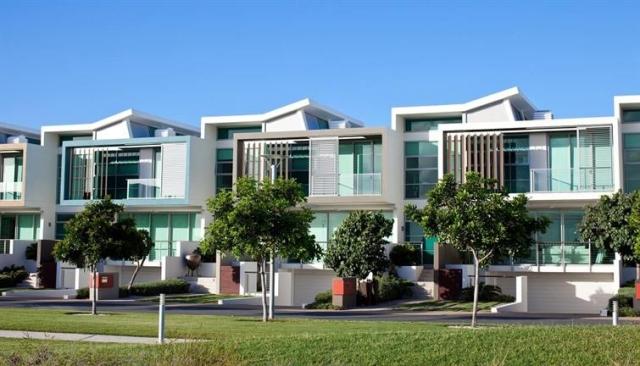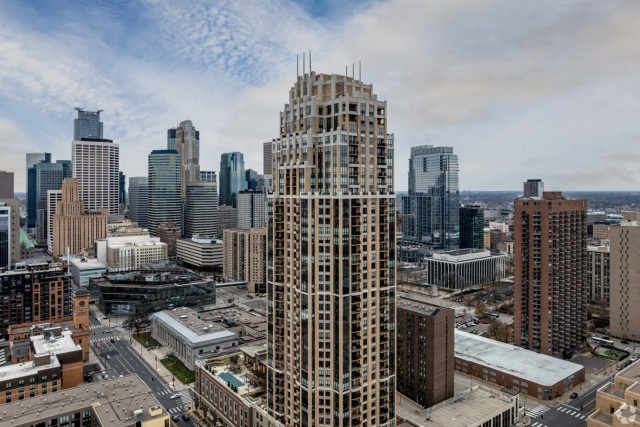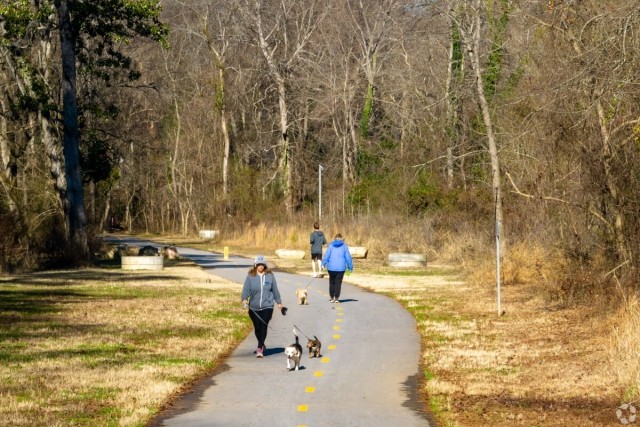Do you know what a flex apartment is? How about a maisonette? A five-over-one? While you might be familiar with many of the apartment types available, there could be options you haven’t considered. We’ve gathered every type of rental available, from apartments to houses and beyond, so you can find a rental home that fits your needs (or provides you with a bit of trivia you can share at parties).
In this article:
- Studio apartments
- Loft apartments
- Garden apartments
- Convertible apartments
- Micro apartments
- Efficiency apartments
- Walk-up apartments
- Low-rise apartments
- Mid-rise apartments
- High-rise apartments
- Luxury apartments
- Co-op apartments
- Co-living apartments
- Flex apartments
- Bachelor apartments
- Basement apartments
- Railroad apartments
- Maisonette apartments
- Five-over-one apartments
- Condos
- Different apartment terms and what they mean
- Other types of rental properties
Studio Apartments
A studio apartment is a small space (typically about 600 square feet) that is one open room except for the bathroom and perhaps a closet. Some studio apartments have a small area that extends from the main living area and provides a little extra separation for a “bedroom” (although there are no doors or interior walls). These studios might be called an alcove studio or an L-shaped studio.
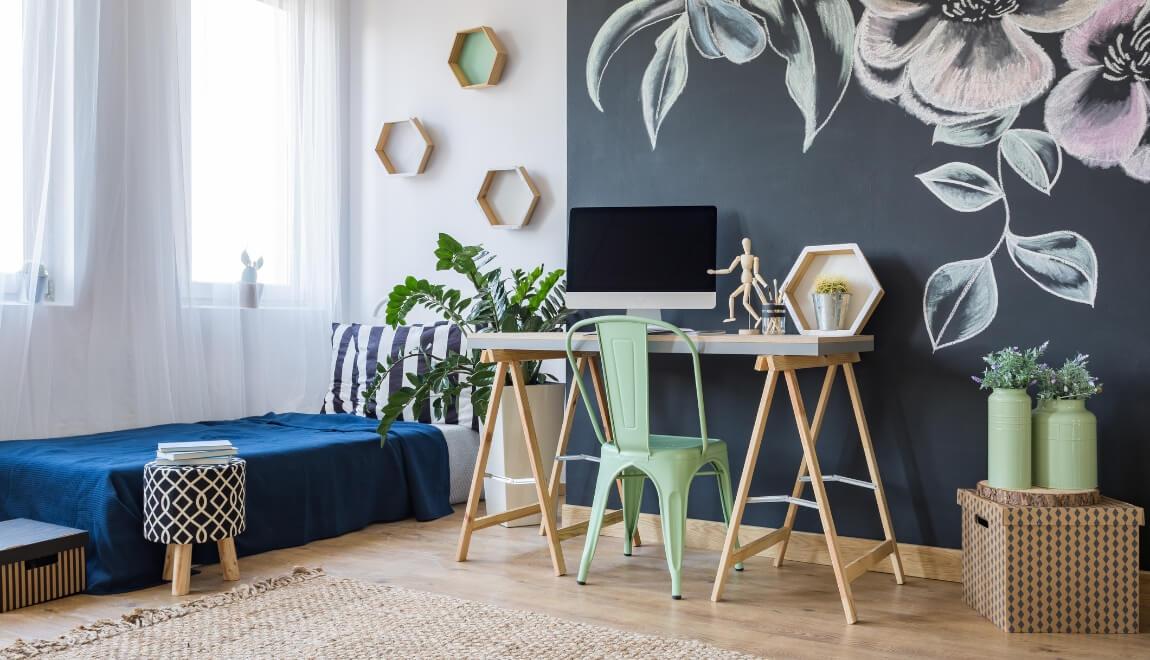
Loft Apartments
While lofts have a similar layout to a studio apartment, meaning everything is in one open space with no interior walls except for the bathroom, lofts are typically much larger with very high ceilings and tall windows. Many lofts are located in historic warehouses that have been converted into living space, so they feature elements like exposed beams, brickwork, and original wood floors.
Garden Apartments
Have you seen the term “garden apartment” and wondered what that meant, exactly? A garden apartment is a smaller apartment community (typically one to three floors) set around a green space or garden area. These apartments typically don’t have elevators and are more plentiful in suburban and rural communities. While you won’t necessarily have your own garden space in a garden apartment, the community might offer shared walking paths, trees and shrubs, ponds, and other natural elements.
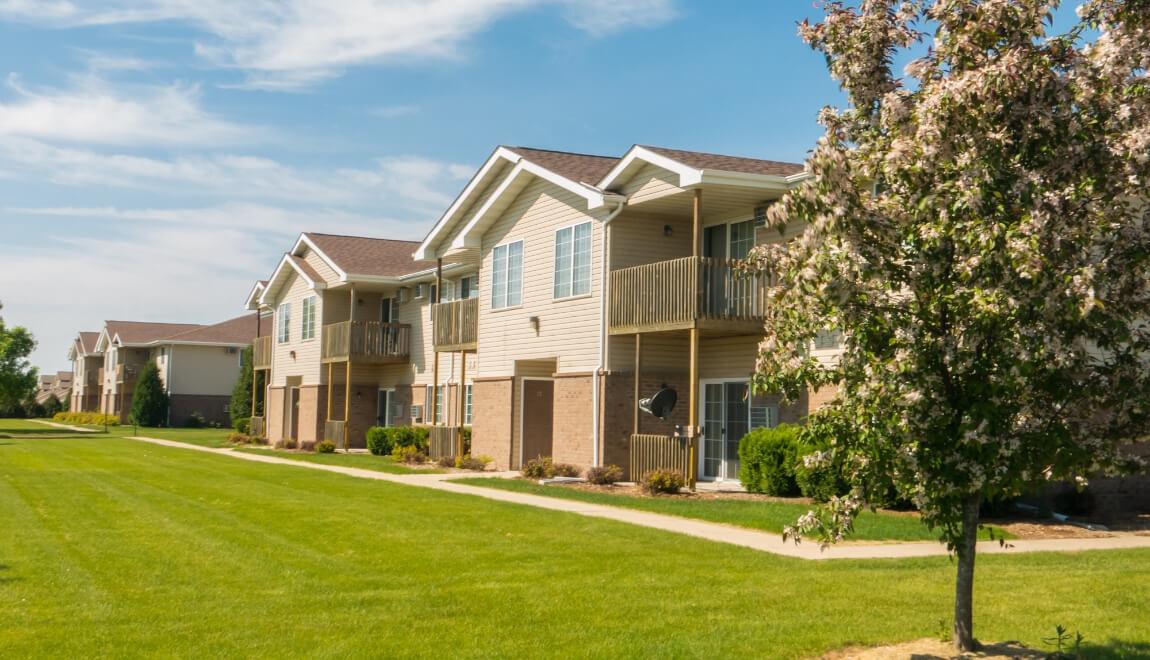
Convertible Apartments
If you don’t want a one-bedroom apartment but you are concerned that a studio will be too small, a convertible apartment might be the perfect solution. A convertible apartment doesn’t have a bedroom, but it does have an area that could work as a bedroom. This might be the separate area in an L-shaped studio, a smaller room with sliding glass doors, or an area separated from the main living area by a half or partial wall. It’s “convertible” because you could use this space for anything, from a bedroom to an office to an art studio.
Micro Apartments
Basically, a micro apartment is a very small studio. Where the typical studio is around 600 square feet, a micro apartment is less than 400 square feet. In fact, a micro apartment can be as small as 100 square feet! (If you are not sure how much square footage that is, it’s about the size of a doctor’s exam room.) Micro apartments work because most of the space is multi-functional (for example, the kitchen table might fold into the wall when not in use, or the couch might convert into a bed).
Efficiency Apartments
An efficiency apartment is like a studio apartment. So much so, in fact, that the two terms are often used interchangeably. The difference is in the kitchen. While a studio will have a standard kitchen with full-size appliances, an efficiency will have a compact kitchenette without a stove or countertop. An efficiency apartment will usually have a mini refrigerator (counter-height or smaller) and a small sink. It might have a small cooktop or microwave in place of a kitchen range.
Walk-Up Apartments
An apartment building without an elevator is known as a walk-up. Unless you rent on the main level, you’ll have to climb stairs to reach your walk-up apartment. These buildings are typically six floors or less and are often less expensive than larger apartment buildings with elevators. If you don’t mind climbing stairs every day, walk-ups are a terrific option for those looking for less-expensive options in the city.
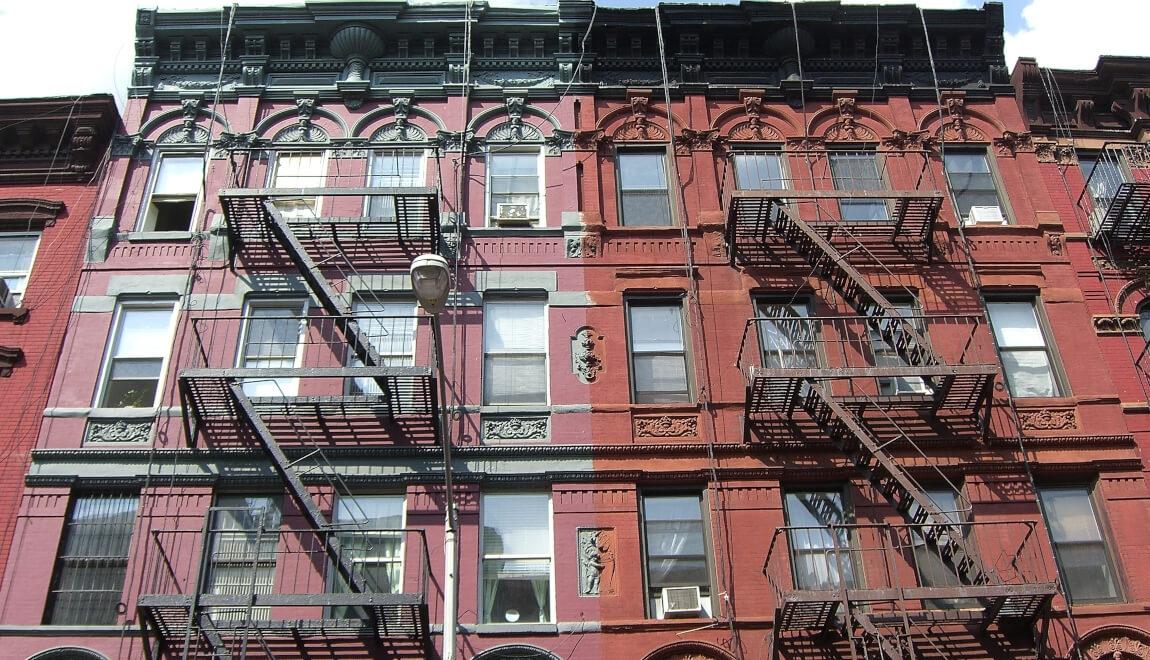
Low-Rise Apartments
A low-rise apartment has four or fewer floors. Unlike walk-up apartments, some low-rise apartments do have elevators. Walk-ups and garden apartments are both types of low-rise apartment buildings.
Mid-Rise Apartments
A building with between five and 12 floors is called a mid-rise. Unlike low-rise apartments, mid-rise apartment buildings will usually have an elevator. Mid-rises are popular because they are more economical for developers, since they contain more units than low-rise apartment buildings but are not as cost restrictive as high-rise apartment buildings.
High-Rise Apartments
Typically, a high-rise apartment building is any building with 12 or more floors. In the US, anything taller than seven stories could be considered a high-rise, and any high-rise building with more than 40 floors is considered a skyscraper. High-rises are most common in large cities, and all high-rises will have an elevator, which is usually located in the center of the building.
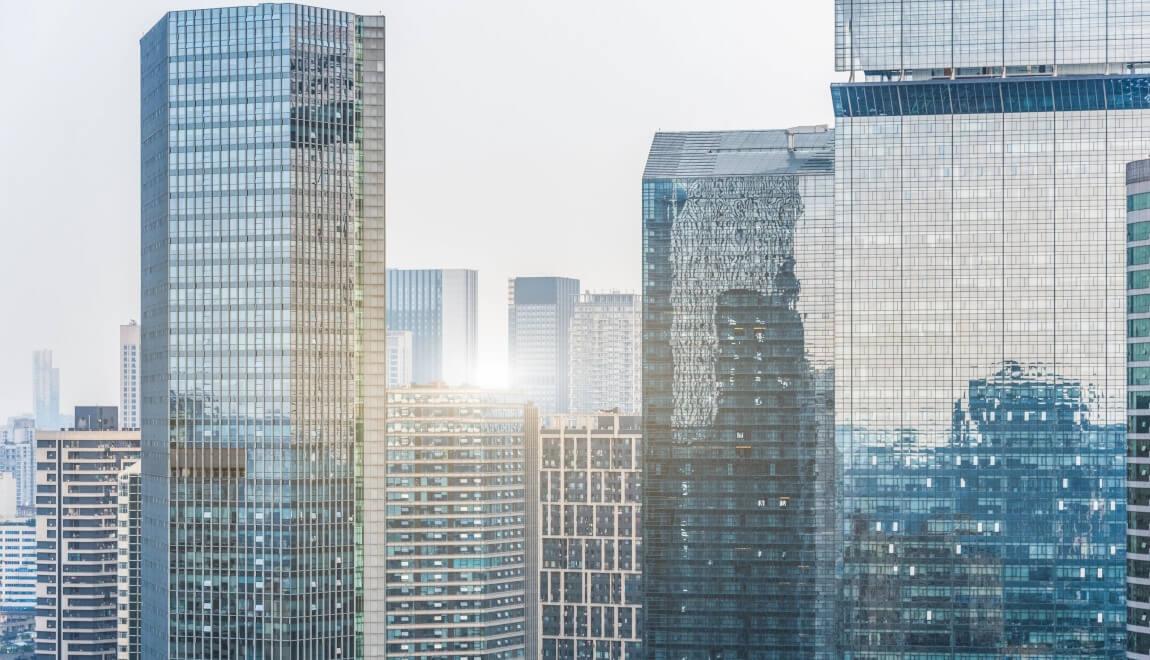
Luxury Apartments
Luxury apartments provide amenities that are considered above and beyond standard amenities. For example, amenities in luxury apartments might include high-end finishes, spectacular views, upgraded appliances, huge closets, or state-of-the-art facilities like an on-site spa, a concierge, or a rooftop swimming pool. Luxury apartments are often more expensive than other apartments in the area because of these features.
Co-op Apartments
Most common in cities like New York and Chicago, co-op (or cooperative) apartments aren’t owned by a single entity, but rather by shareholders. These shareholders don’t purchase an individual unit, but rather part of the building. Like a condo, the owner can rent out their apartment, but it is a complicated process. There is usually a board that will set the policies for the building, and some do allow shareholders to sublet their apartments. Renting a co-op apartment will usually involve a long and involved application and interview process.
Co-Living Apartments
In a co-living apartment, you have your own private bedroom and the rest of the apartment is common, or shared, among other individuals renting their own private bedrooms. For example, a co-living apartment might have four bedrooms. Each of those bedrooms is rented by an individual, while the living area and kitchen are shared. Co-living is a popular trend in student housing, but it is catching on in some very expensive cities, as well, such as Los Angeles, New York, and San Francisco, as a way to curb costs.
Flex Apartments
A flex apartment, also called a convertible apartment, allows you to use a temporary wall to create a separate room. For example, if you rent a one-bedroom flex apartment, your apartment could be converted into a two-bedroom apartment with a temporary wall. Renters have several options for creating this flexible space, including using pressurized walls.
Bachelor Apartments
A bachelor apartment is a small apartment (usually between 200 and 600 square feet) that has everything contained in one room, including the kitchen or kitchenette. While similar to an efficiency and a studio, a bachelor apartment is smaller and the kitchen isn’t separated from the living space. The bathroom, while still separate from the living area, is usually smaller than in a studio apartment. A bachelor apartment won’t feature an alcove or loft area like many studio apartments, either.
Basement Apartments
A basement apartment is located below street level. Above this apartment, you’ll typically find more apartments, a house, or a business. Basement apartments are often found in large cities, but private homeowners might convert a basement into an apartment for rental income.
Railroad Apartments
While not very common, you might come across the term “railroad apartment.” This simply means that each room leads into the next without any hallways, almost like a train’s passenger cars. These apartments are most often found in older buildings and converted brownstones.
Maisonette Apartments
Maisonette is French for “little house.” A maisonette will have a private entrance to the street, and it is usually one or two rooms in a larger building or house. It often has two floors, and part of the actual living space might be above a shop, garage, or another maisonette.
Five-over-one Apartments
This apartment style gained popularity within the last decade thanks to the desire for mixed-use developments. A five-over-one has four floors of apartments over one floor of commercial space or a parking garage. A five-over-one apartment building could have shops and restaurants on the main level and apartments above, or it could have parking below and apartments above. Usually, the first level is concrete and the floors above this are wood construction.

Condos
A condo, short for condominium, is a building with individually owned units. If you find a condo for rent, you will be renting from the owner of that unit and not from the building itself. Condos have similar features and amenities as apartments. The biggest difference between the two stem from ownership.
Different Apartment Terms and What They Mean
There are other less common terms you might come across, especially if you are focused on a certain area like New York. Some real estate markets develop their own terms for apartment styles. Here are a few you might encounter.
Classic six apartments
A classic six apartment is common in New York City. Classic six apartments refer to those built before 1940 and they always have six distinct rooms. These rooms include a formal dining room, two full bedrooms, and a small bedroom with a bathroom located off the kitchen, historically called the maid’s room. Today, the small bedroom is often converted into a den, office, or breakfast room. If you hear the terms “classic seven” and “classic eight,” this is the same type of apartment (built before 1940) but with three full bedrooms (classic seven) or four full bedrooms (classic eight).
Junior 4 apartments
A junior 4 apartment has four rooms: living room, kitchen, a bedroom, and a dining room. The dining room in a junior 4 could be also used as a den or office. It is a small room, typically without a window. You might also hear “junior 5” or “junior 6,” which just means there’s an additional bedroom in the apartment.
Penthouse apartments
A penthouse apartment is an apartment located on the highest floor of the building. It is typically very large and often includes luxury features like private rooftop decks and great views. The penthouse apartment often features a private elevator, and because there are no apartments above it, vaulted or high ceilings.
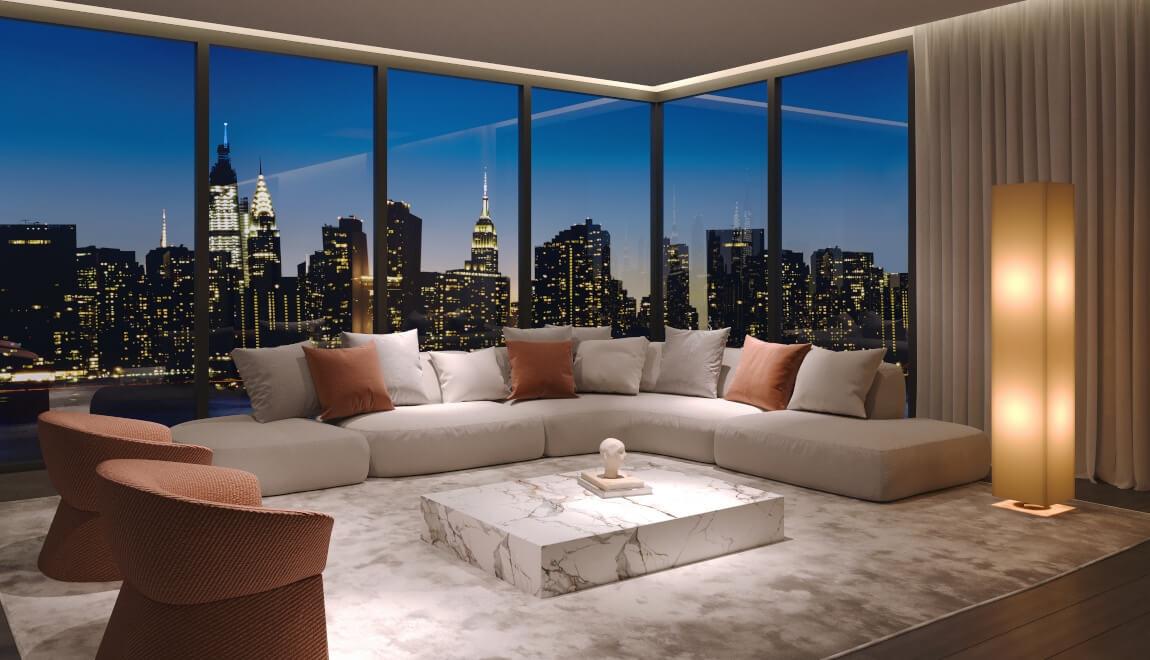
Corporate apartments
A corporate apartment is a furnished apartment that is available on a short-term or temporary basis. Companies will often choose a corporate apartment rather than a hotel if the employee will be in the area for an extended time, usually a month or more. Corporate housing is usually larger than the average hotel room.
Parlor floor apartments
A parlor floor apartment refers to an upper level apartment in a townhome. This term is usually used for a historic brownstone, where the upper level had the highest ceilings, so it was used for entertaining guests (as a parlor and dining room, for example). Eventually, these parlor floors were converted into apartments.
Pied-a-terre
When someone keeps an apartment in the city as a secondary or occasional residence, that apartment is called a pied-a-terre. Pied-a-terre are popular in cities like New York, but any part-time dwelling could be considered a pied-a-terre.
Other Types of Rental Properties
Houses
A free-standing, single-family home on its own private land or lot is a house or a single-family home. These are often owned by individuals rather than property management companies.
Build-to-Rent communities
A build-to-rent community, sometimes called a BTR or a single-family housing community, is a fairly new type of rental property that consists of single-family homes (usually with private back yards) built specifically to be rented out. Developers will purchase a large amount of vacant property, usually in a rural area or in the suburbs, and design rental houses around common areas, such as a clubhouse, tennis courts, playground, or pool. Unlike houses that are rented out by individual owners, BTR communities are managed by a property management company like an apartment building. This type of community is great for those who want the amenities available in an apartment community but with more space (including outdoor space) that a single-family house provides.
Townhomes
Townhouses are attached or terraced. Some are historic, such as the rowhouses in cities like Philadelphia, New Orleans, and Baltimore, while others are very modern, such as those typical in suburban cities. Townhouses are usually narrow, two stories, and they share at least one wall with another unit.
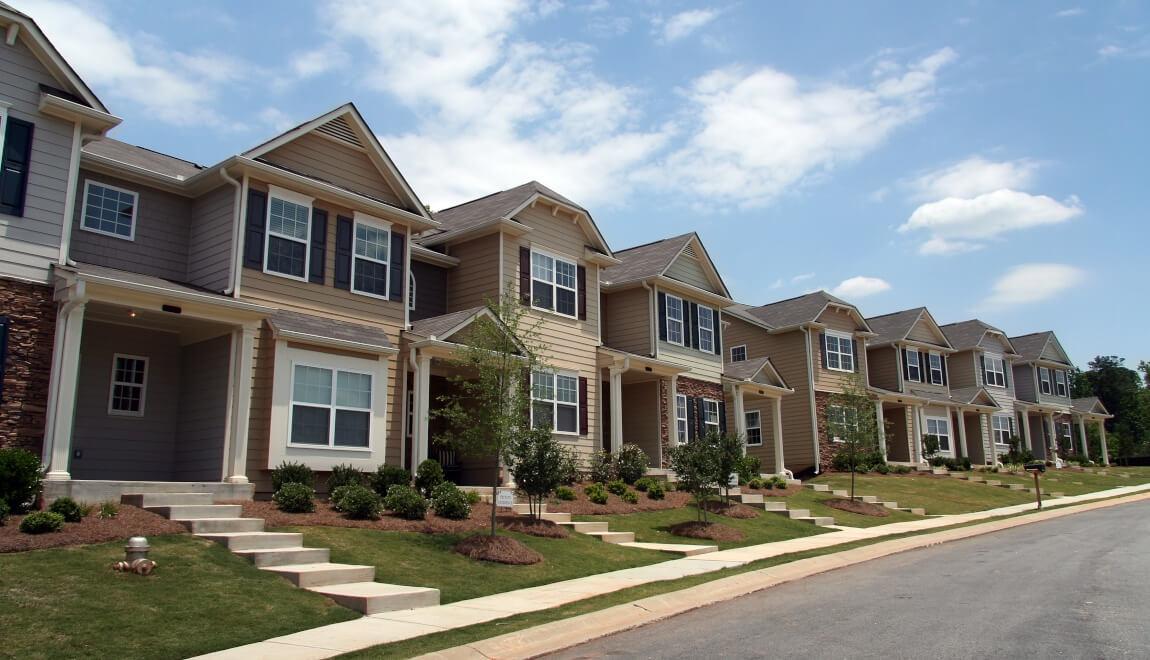
Duplexes
Where townhomes are typically several attached homes in a row, duplexes contain two side-by-side units. A duplex resembles a traditional single-family house from a distance, but it will have two front doors, each leading to a separate living space. Like townhomes, duplexes are typically two stories.
Triplexes
A triplex is similar in design to a duplex, only there are three apartments rather than two. A triplex could also be multi-level, with an apartment on each floor.
Now that you’re familiar with the different types and styles of rentals available, it’s time to find out how much rent you can afford and then start searching for that perfect fit.


